During the month of August, an international team of researchers assembled at TRIUMF to run the first of a series of experiments in nuclear structure and astrophysics using neutron transfer reactions with neutron-rich sodium isotopes (experiment S1107). The experiment was run using the new SHARC (Silicon Highly-segmented Array for Reactions and Coulex) detector which had been integrated into the existing TIGRESS (TRIUMF-ISAC Gamma-Ray Escape Suppressed Spectrometer) apparatus at TRIUMF's ISAC-II rare-isotope-beam facility. The goal of the experiment was to investigate the changes in shell structure in exotic (far from stable) nuclei, in particular sodium-26, through a reaction where a neutron is transferred into the already neutron-rich sodium-25 nucleus. Wilton Catford and Christian Diget from the Universities of Surrey and York (both in the UK) lead the project.
The SHARC-TIGRESS detector system, combined with accelerated rare-isotope beams from ISAC, provides a powerful tool to further our knowledge and understanding of the nucleus, the way nuclear structure works, and how the structure of nuclei determines how nuclear explosions in stars proceed. It was originally thought that the shell model used to describe nuclear structure would be the same for exotic nuclei as it is for stable nuclei. However, researchers have come to find that these shell structures change in exotic nuclei as the ratio between the number of protons and neutrons changes. Using the SHARC-TIGRESS detector system, experimenters are better able to probe the structure of these exotic nuclei.
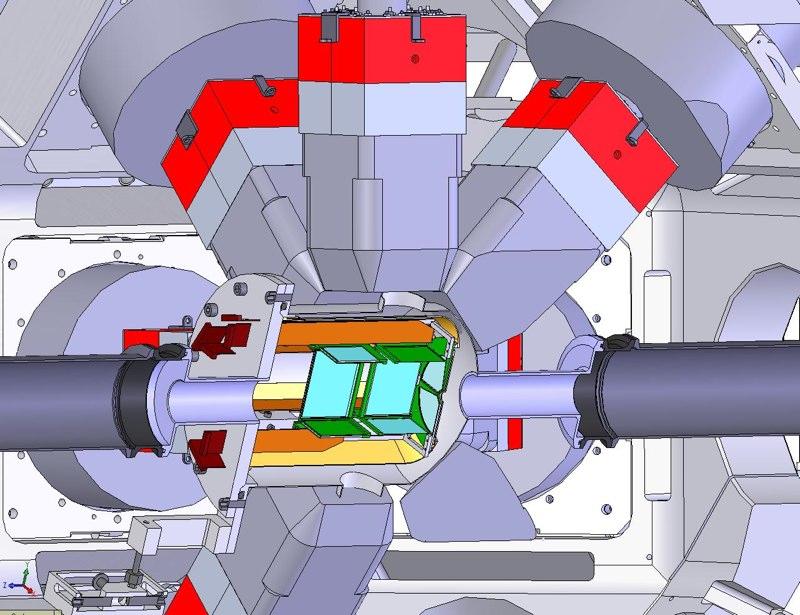 | 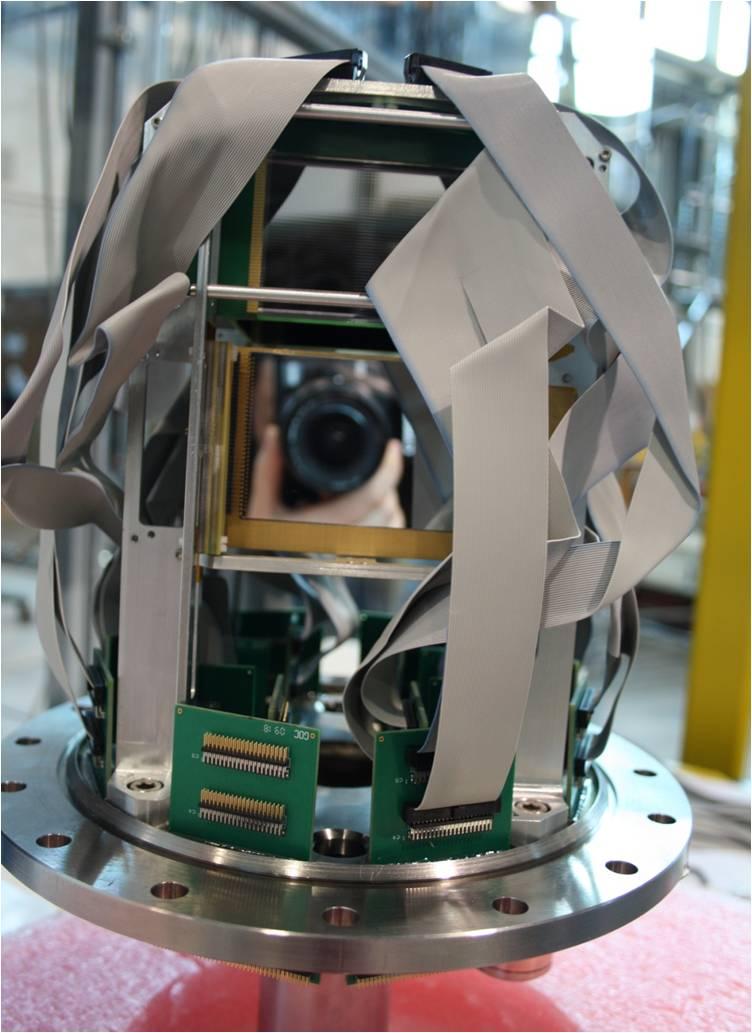 | 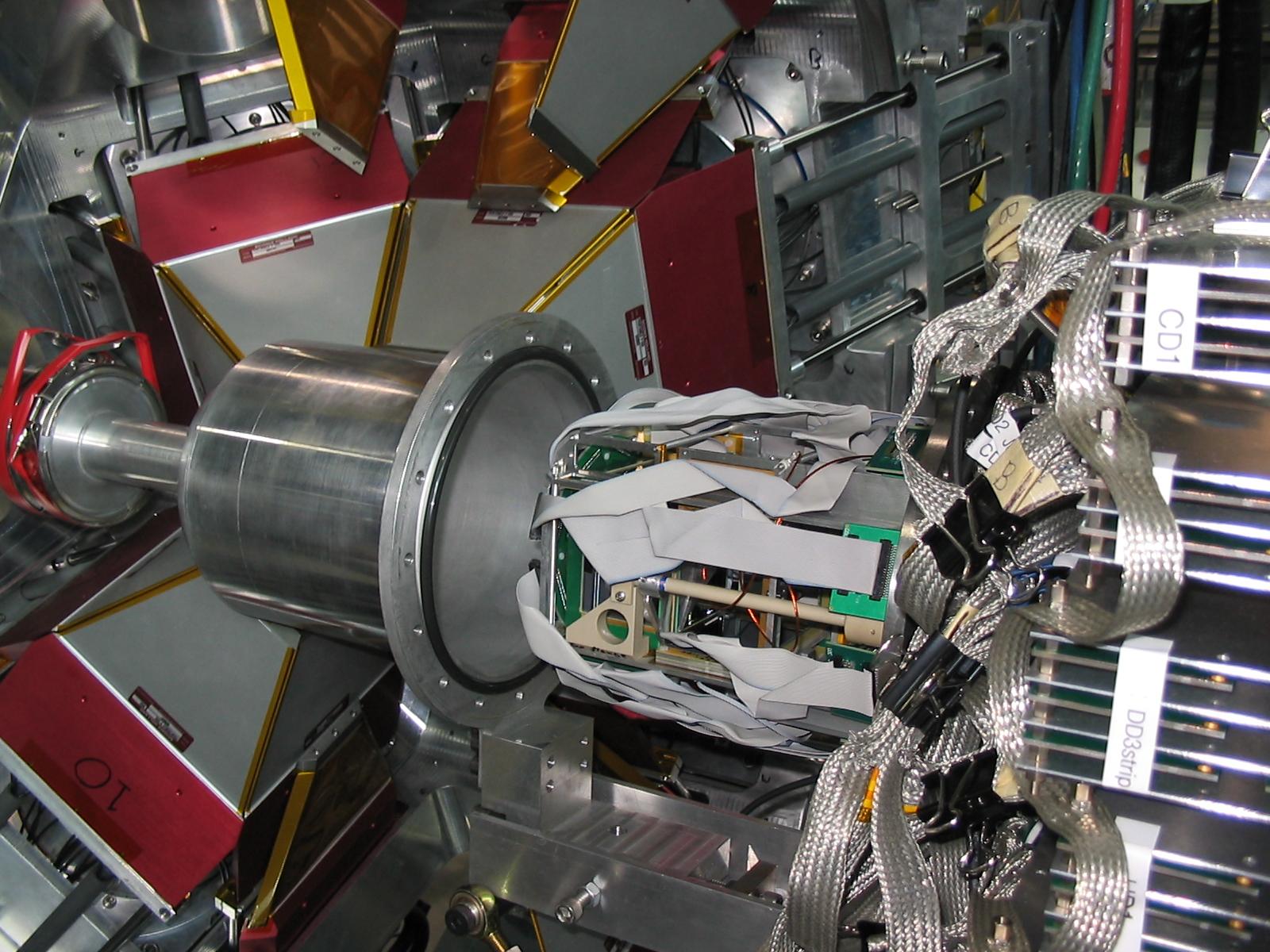 |
| Left: Solidworks model of the SHARC detector integrated into TIGRESS; Centre: the SHARC detector; Right: a close-up view of the actual SHARC detector installed in TIGRESS for experiment S1107. | ||
There are two major research programs which will benefit significantly from the utilization of the SHARC-TIGRESS detector system: reaction studies and Coulomb excitations (Coulex). Experiment S1107 focuses on reaction studies.
In this first experiment, the proton beam from the cyclotron was aimed at the ISAC Silicon Carbide (SiC) primary target. The resultant spallation yielded sodium-25 ions which were then separated out magnetically and as an ion beam accelerated in ISAC-II where the beam was focused onto a target foil of deuterated polyethylene.
At this point in the experiment, many reactions may occur, one of which is the transfer reaction. In the transfer reaction, the sodium-25 nucleus hits the deuterium nucleus and the deuterium transfers an extra neutron to the sodium, producing sodium-26 in an excited state, plus a proton. The proton as well as the gamma radiation from the decaying sodium-26 excited state are measured by the detectors in SHARC and TIGRESS (SHARC detects the protons while TIGRESS detects gamma radiation). The combination of these two detectors therefore produces a much more complete picture of what is going on.
In order to pick out the transfer reactions from other dominant reactions another detector was installed called a Trifoil. In this experiment, the sodium ions from the transfer reaction will reach the Trifoil and cause a signal. The residues from another type of reaction, fusion evaporation, are, however, stopped before they reach the Trifoil detector. The experimenters can therefore suppress signals from the fusion-evaporation reaction and focus solely on the transfer reaction. From this data, the researchers were able to clearly observe the transfer reactions. The detailed analysis of the data, now under way, will give new insight into the change in the shell structure for sodium-26.
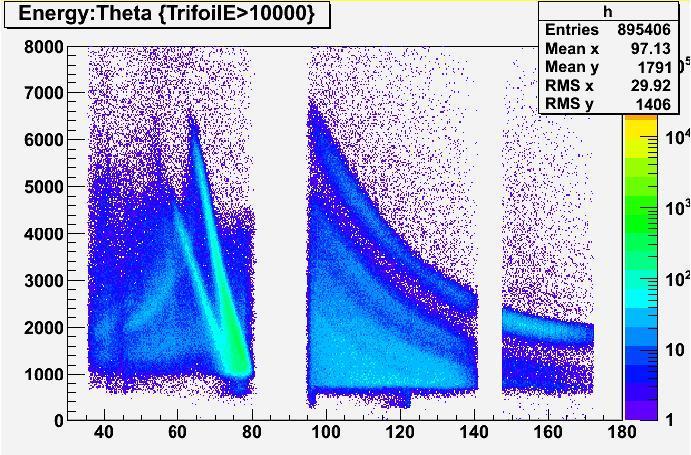 | 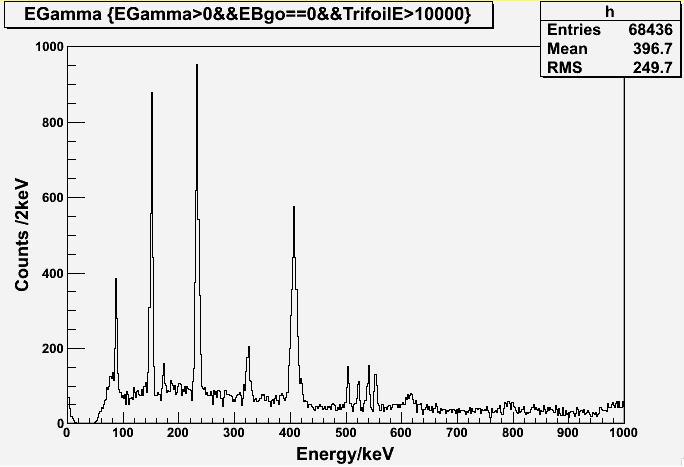 | |
| Left: graph shows the elastically-scattered deuterium (left) and the d,p reactions and change in first and second nucleon energies (centre and right); Right: Gamma-ray spectra, Trifoil and particle gated. | ||
With the first SHARC-TIGRESS experiment successfully completed, future experiments will study nuclear reactions that only happen in exploding stars at a level of detail that has never before been achieved.
Major capital investment and operation of TIGRESS is funded by the Natural Sciences and Engineering Research Council of Canada and the National Research Council Canada. The SHARC project is funded by the UK Science and Technology Facilities Council and is being carried out by a collaboration of scientists from University of York, University of Birmingham, Daresbury Laboratory, University of Manchester, and University of Surrey (UK); Colorado School of Mines and Louisiana State University (USA); and TRIUMF, McMaster University, Saint Mary's University, and Simon Fraser University (Canada).
-- Meghan Magee, Communications Assistant with help from SHARC experts Christian Diget and Rachel Ashley.
